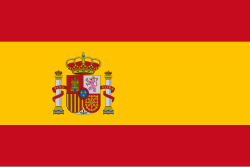Cuba is an island where music is rooted in each of its children. Benny Moré (Bartolomé Maximiliano Moré Gutiérrez), the man who infused passion and life into melody, was its true representative with his unique timbre.
He was born on August 24th, 1919, in Santa Isabel de las Lajas. Self-taught, coming from a humble, large family, he aspired to and achieved success.
With the septet Cauto, he debuted on the CMZ radio station, and his entry into Miguel Matamoros’ group can be considered his true debut as a professional Singer. Leading to his first recordings on 78 rpm records.
Benny Moré wrote his first composition at age 14. He would create songs anywhere, in the bathroom or while eating. If he had a musical idea, he would find paper and pencil to jot down lyrics and melodies that cemented his status as a legendary singer.
He could express to his arrangers what he dreamed of in terms of harmony, timbre, and rhythm. He possessed a voice that was simultaneously dense and lyrical, joyful, melancholic, seductive, and aggressive. He was capable of singing whatever he wanted. He incorporated religious music from the Congo, rumba negra, traditional trova, and son. He made bolero his classic style.
He led the Banda Gigante and with it, he made thousands of fans dance throughout the Americas. Where he captivated with his magnificent performances, moving Pérez Prado, the King of Mambo.
As Ecured points out, his wide range of performances and his innate ability for musical composition placed him at the pinnacle of Cuban culture. His recordings have continued to be heard over time, and the legend of his artistic life has transcended generations.
Benny, with his legendary cane, known as the “Barbarian of Rhythm,” the “Greatest Sonero of Cuba,” did not escape the intense life of an artist, the women, the liquor. His body could not withstand the excesses, and he passed away early at 44 years of age.
The celebrated musician, a regular on Radio Progreso, the peerless singer of the biggest stages, cheered by crowds of fans, 106 years after his birth, continues to be a symbol and reference point for Cuban music.
By: Enma Colina Bruzón
- Acinox in Holguin Expands Product Sales - 28 de November de 2025
- The University of Medical Sciences Receive an Excellence Accreditation - 28 de November de 2025
- A Happy and Fulfilled Woman in the Laboratory - 28 de November de 2025

